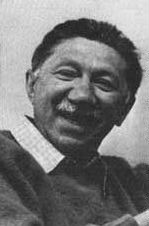MASLOW
(1954) attempted to synthesize a large body of research related to human motivation. Prior to Maslow, researchers generally focused separately on such factors as biology, achievement, or power to explain what energizes, directs, and sustains human behavior. Maslow posited a hierarchy of human needs based on two groupings: deficiency needs and growth needs. Within the deficiency needs, each lower need must be met before moving to the next higher level. Once each of these needs has been satisfied, if at some future time a deficiency is detected, the individual will act to remove the deficiency. The first four levels are: According to Maslow, an individual is ready to act upon the growth needs if and only if the deficiency needs are met. Maslow's initial conceptualization included only one growth need--self-actualization. Self-actualized people are characterized by: 1) being problem-focused; 2) incorporating an ongoing freshness of appreciation of life; 3) a concern about personal growth; and 4) the ability to have peak experiences. Maslow later differentiated the growth need of self-actualization, specifically naming two lower-level growth needs prior to general level of self-actualization (Maslow & Lowery, 1998) and one beyond that level (Maslow, 1971). They are: Maslow's basic position is that as one becomes more self-actualized and self-transcendent, one becomes more wise (develops wisdom) and automatically knows what to do in a wide variety of situations. Daniels (2001) suggests that Maslow's ultimate conclusion that the highest levels of self-actualization are transcendent in their nature may be one of his most important contributions to the study of human behavior and motivation.Norwood (1999) proposes that Maslow's hierarchy can be used to describe the kinds of information that individual's seek at different levels. For example, individuals at the lowest level seek coping information in order to meet their basic needs. Information that is not directly connected to helping a person meet his or her needs in a very short time span is simply left unattended. Individuals at the safety level need helping information. They seek to be assisted in seeing how they can be safe and secure. Enlightening information is sought by individuals seeking to meet their belong ingness needs. Quite often this can be found in books or other materials on relationship development. Empowering information is sought by people at the esteem level. They are looking for information on how their ego can be developed. Finally, people in the growth levels of cogntive, aesthetic, and self-actualization seek edifying information. While Norwood does not specifically address the level of transcendence, I believe it safe to say that individuals at this stage would seek information on how to connect to something beyond themselves or to how others could be edified. Maslow published his first conceptualization of his theory over 50 years ago (Maslow, 1943) and it has since become one of the most popular and often cited theories of human motivation. An interesting phenomenon related to Maslow's work is that in spite of a lack of evidence to support his hierarchy, it enjoys wide acceptance (Wahba & Bridge well, 1976; Sober, Milford & Rosenthal, 1995). The few major studies that have been completed on the hierarchy seem to support the proposals of William James (1892/1962) and Mathes (1981) that there are three levels of human needs. James hypothesized the levels of material (physiological, safety), social (belongingness, esteem), and spiritual. Mathes proposed the three levels were physiological, belonginess, and self-actualization; he considered security and self-esteem as unwarranted. Alderfer (1972) developed a comparable hierarchy with his ERG (existence, relatedness, and growth) theory. His approach modified Maslow's theory based on the work of Gordon Allport (1960, 1961) who incorporated concepts from systems theory into his work on personality.
ที่มา http://chiron.valdosta.edu/whuitt/col/regsys/maslow.html
1. (1954) attempted to synthesize a large body of research related to human motivation. 2. Once each of these needs has been satisfied, if at some future time a deficiency is detected, the individual will act to remove the deficiency.
3. Maslow later differentiated the growth need of self-actualization, specifically naming two lower-level growth needs prior to general level of self-actualization (Maslow & Lowery, 1998) and one beyond that level (Maslow, 1971).
4. Daniels (2001) suggests that Maslow's ultimate conclusion that the highest levels of self-actualization are transcendent in their nature may be one of his most important contributions to the study of human behavior and motivation.Norwood (1999) proposes that Maslow's hierarchy can be used to describe the kinds of information that individual's seek at different levels. 5. Information that is not directly connected to helping a person meet his or her needs in a very short time span is simply left unattended.6. Enlightening information is sought by individuals seeking to meet their belongingness needs.
7. They are looking for information on how their ego can be developed. Finally, people in the growth levels of cognitive, aesthetic, and self-actualization seek edifying information. 8. Maslow published his first conceptualization of his theory over 50 years ago (Maslow, 1943) and it has since become one of the most popular and often cited theories of human motivation. 9. The few major studies that have been completed on the hierarchy seem to support the proposals of William James (1892/1962) and Mathes (1981) that there are three levels of human needs.
10. Mathes proposed the three levels were physiological, belonginess, and self-actualization; he considered security and self-esteem as unwarranted. Alderfer (1972) developed a comparable hierarchy with his ERG (existence, relatedness, and growth) theory. His approach modified Maslow's theory based on the work of Gordon Allport (1960, 1961) who incorporated concepts from systems theory into his work on personality.
